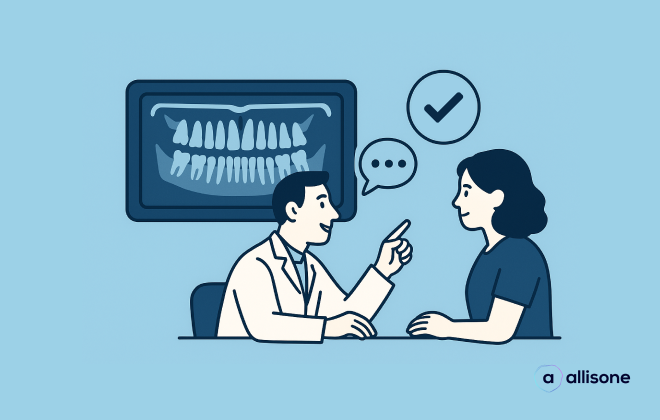
Historically, the practitioner-patient relationship was based on a "paternalistic" approach. But times have changed: the patient now wants to be an "actor" in his or her care, a stakeholder in therapeutic decisions. Moreover, it has been demonstrated that a good practitioner-patient relationship, in addition to providing satisfaction to both parties, has a positive influence on the therapeutic outcome. Today, the model of the physician who is stingy with explanations, with imperative prescriptions, who delivers partial information, is therefore definitively over.
1) Demonstrate empathy
This is the first recommendation made by the National Academy of Medicine to improve the doctor-patient relationship: " Favour in all circumstances, in a spirit of dialogue, an empathic relationship with the patientThis is the first recommendation formulated by the National Academy of Medicine to improve the doctor-patient relationship: "...based on listening to and taking into account the patient's concerns and complaints".
The empathic approach can be articulated in 5 distinct actions:
- Encourage the patient's expression: Do not interrupt, accept silences, encourage expression through reminders
- Be attentive: Listen to the patient, including their non-verbal language, identify their emotions
- Show that you are listening to him/her: Place yourself at the right distance, use verbal and non-verbal cues, express yourself with a benevolent and respectful tone
- Understanding the patient: Questioning him or her through follow-ups (echoing, mirroring, rephrasing or direct questions)
- Show that we understand him/her: Support him, and don't judge him (no lectures, no moral lessons)
2) Inform him/her properly
Any information, prescription or diagnosis must be accompanied by explanations. Their clarity is for the patient an indication of the doctor's competence, and a factor of confidence in him. However, the information must be adapted, without unnecessarily frightening or misleading terms. It must also be sincere, even if it is never easy to admit that one "does not know", or that one hesitates between several hypotheses.
For example, we can comment on the gestures we perform during consultations, or give the patient the benefit of the screen during imaging examinations. Some solutions, such as the Allisone solution allow the patient to see simplified X-rays for a better understanding.
3) Adopt appropriate communication
Understanding medical explanations can be complex for some patients. Indeed, it has been estimated that understanding medical terms requires a second grade level. In France, 29% of the population has, at best, a primary school certificate. Similarly, in the United States, 20% of the population has a reading level equivalent to CM2. Aging and the deterioration of sensory capacities also contribute to comprehension difficulties.
Keep it simple, short and systematically ask for rephrasing These are the recommendations of programs designed to improve patient compliance and combat social inequalities. Dedicated communication tools have been developed. Among them, the internationally recognized "teach-back" method consists of having the patient reformulate the information to ensure that it has been retained and understood.
4) Improve your practice
Surveying the patient about his or her feelings at the time of the care allows the patient to be valued and to improve his or her practices at the same time. At the end of the procedure, satisfaction questionnaires can be submitted to the patient or his or her testimony can be collected by e-mail or telephone.
In addition, to reinforce one's skills and those of one's team, there are now many training courses dedicated to the practitioner-patient relationship. Objectives: to understand the issues and the role of each person in the interactions with the patient and his entourage, to identify the patient's emotions, to adopt the right relational distance, to improve his communication, ...
5) Avoiding certain pitfalls
The practitioner-patient relationship has many facets and it may seem difficult to master them all. In order to ensure a healthy foundation for the exchange, care can be taken to avoid the following pitfalls:
- Infantilizing or moralizing the patient
- Exclude the patient from the management protocol and decision making
- Ignoring sensitive and/or taboo subjects, such as sexuality or drug or alcohol use
Click here to learn more about Allisone.
Articles en lien
Lorem ipsum dolor sit amet, consectetur adipiscing elit.

L’intelligence artificielle au cœur des soins dentaires : témoignage du Dr Paola

Mieux faire accepter les plans de traitement : 4 leviers qui fonctionnent vraiment






